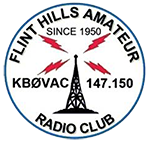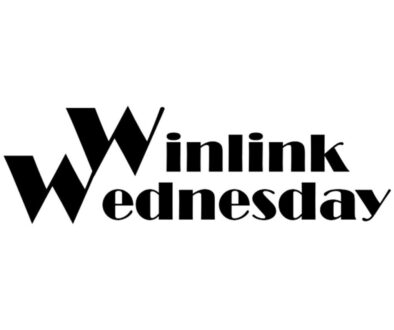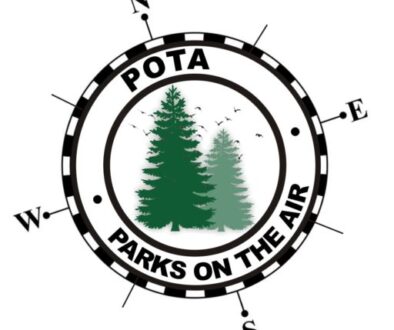Help for the New Ham Radio Operator
Now that you’re a new ham radio operator – you’ve passed that Technician test, got your ham radio, and FCC issued call sign, what do you do next?
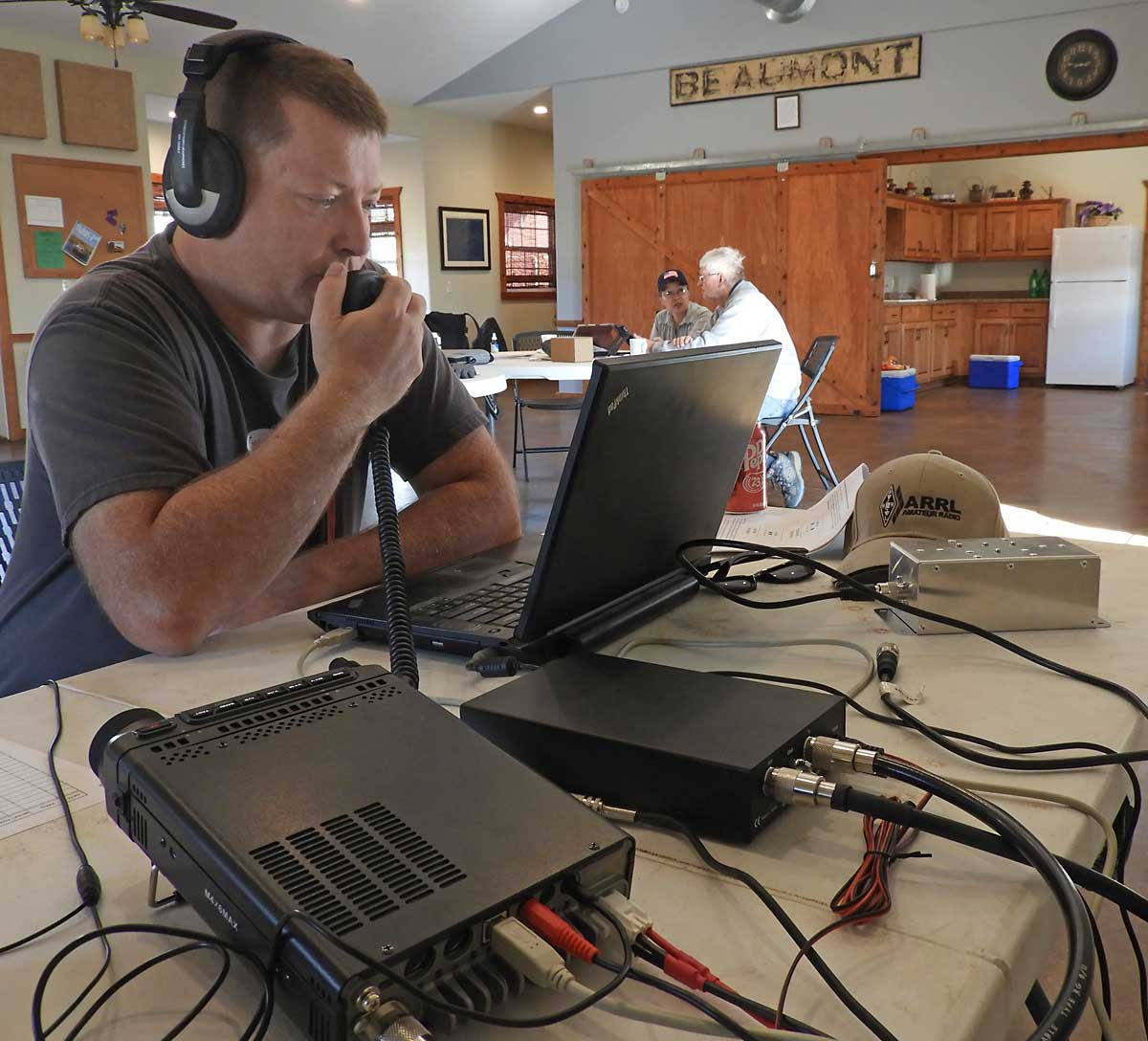
Get on the radio!
Sadly, many get their license but are never heard on the frequencies. If that’s you, perhaps this guide will help you take the next steps in your ham radio hobby. Don’t be intimidated about pressing that PTT button and talking. There are many friendly and experienced hams on the air that are happy to help new operators.
A great place to start is the simplex frequency 146.520 Mhz. This frequency is monitored constantly and there is usually a group of hams on the air every evening for rag chew and answering your amateur radio questions.
Join a Ham Radio Club
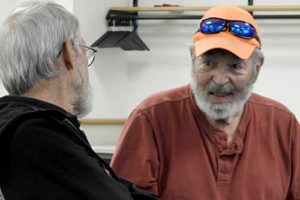 The Flint Hills Amateur Radio Club, as well as many others in the region, are full of experienced people who are willing to help you. If you’re anything like me when I first became a ham, I didn’t know much about amateur radio, antennas, electronics, and all the other stuff associated with this hobby. I had lots of questions about radios, antennas, and what I could do with my radio. When I joined a club, I discovered all sorts of people I could ask and get my questions answered.
The Flint Hills Amateur Radio Club, as well as many others in the region, are full of experienced people who are willing to help you. If you’re anything like me when I first became a ham, I didn’t know much about amateur radio, antennas, electronics, and all the other stuff associated with this hobby. I had lots of questions about radios, antennas, and what I could do with my radio. When I joined a club, I discovered all sorts of people I could ask and get my questions answered.
FHARC sponsors several events each year for members to test out their radio gear and have fun. The club meets monthly for club business at the EOC in Augusta. They also host a weekly weather net on 147.150 Mhz. And, many members get together each Saturday morning on Zoom.
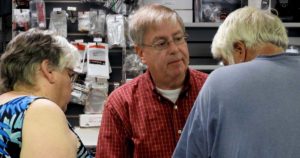 Another great resource in the Wichita/Derby area is the Radio Shack located in Derby. Local hams often gather there on Saturday mornings to meet other hams and share stories. There is almost always someone there eager to help you get started in this hobby. And, the owners Mark (KBØMOF) and Shawn (KBØMNY) will help you sort out all those equipment questions and get you steered in the right direction.
Another great resource in the Wichita/Derby area is the Radio Shack located in Derby. Local hams often gather there on Saturday mornings to meet other hams and share stories. There is almost always someone there eager to help you get started in this hobby. And, the owners Mark (KBØMOF) and Shawn (KBØMNY) will help you sort out all those equipment questions and get you steered in the right direction.
 The Derby Radio Shack (also known as “the Shack” or “candy store”) is the location for the annual Sidewalk Sale held in the spring every year. Hams from around the region set up tables in the parking lot selling their goods and talking radio. It’s a great opportunity to find a good deal on radio gear and meet face-to-face with local operators.
The Derby Radio Shack (also known as “the Shack” or “candy store”) is the location for the annual Sidewalk Sale held in the spring every year. Hams from around the region set up tables in the parking lot selling their goods and talking radio. It’s a great opportunity to find a good deal on radio gear and meet face-to-face with local operators.
Another great way to find those bargains and meet other hams is the ham fest. Although largely curtailed during the Covid scare, they are still one of the more popular get together’s for hams every year. Watch for notices at the Shack, your ham club, and weekly radio nets.
What Equipment does a new ham radio operator need?
Many start with a hand-held (HT) portable radio. There are many recommendations and reviews of these low cost radios on the Internet and YouTube. One popular radio is the Baoefeng. These can be bought for as little as $20 and up. My experience with the Baofeng BF-8-HP and UV 5R is that they are great little radios, but the receivers in them are not the greatest. It doesn’t do you much good if others hear you… but you cannot hear them. Adding a better quality antenna will help a little, but the receivers are just not up to par with higher priced radios.
For the best experience you’ll want a 2 meter mobile transceiver. These can be found used starting around $100 and up. These are higher quality radios with more power and better transceivers. These radios don’t have to be limited to your car. Most ham operators attach them to a 12V power supply indoors and use them for their base stations. You might also consider one of the dual band 2M/70cm rigs. While there’s not much traffic on 70cm, a dual band radio that includes a cross band repeat option is great for using your HT anywhere around the house while getting the benefit of transmitting your signal from your base station radio/antenna.
Your antenna is really the main thing to focus on to improve your radio signals. That rubber duck antenna on hand held radios is the first thing you want to improve. For a mobile radio installed in your car, you can start with a good mag mount antenna. In a pinch, you can even use a mag mount antenna sitting on a cookie sheet for a ground plane. For the best results, you’ll need a ground plane antenna attached to a pole or structure as high as you can get it. The higher your antenna, the greater distance you’ll be able to work. Remember… height is your friend.
Making a Call on your Radio
The protocol for making a call out on a simplex or repeater frequency is to:
- First, listen for others talking on the frequency. You don’t want to interfere with an existing QSO. When the frequency is clear, you may proceed.
- Press your PTT (push-to-talk) button on your radio and say your call sign. If you know the call sign of the person you want to talk to, you first say your call sign followed by their call sign.
Understanding Simplex vs. Repeaters
Simplex frequencies work for local communication.
They are essentially point-to-point line of sight. The national simplex calling frequency is 146.520 MHz and you can often find other hams here to talk to.
To talk a little farther, you’ll want to use a repeater.
A repeater is an automated radio station used by amateur radio operators to enable two-way communication across an area which would otherwise be difficult by point-to-point on VHF and UHF. A radio repeater usually consists of a radio receiver connected to a radio transmitter. The received signal is amplified and re-transmitted, often on another frequency.
To connect to a repeater, you’ll need to know about frequency offsets and CTCSS tones.
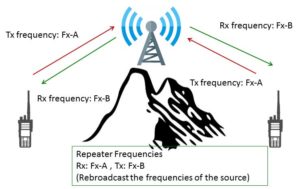 Typically a repeater station listens on one frequency, A, and transmits on a second, B. All mobile stations listen for signals on channel B and transmit on channel A. The difference between the two frequencies is the offset. In the USA two-meter band, the standard offset is 600 kHz (0.6 MHz).
Typically a repeater station listens on one frequency, A, and transmits on a second, B. All mobile stations listen for signals on channel B and transmit on channel A. The difference between the two frequencies is the offset. In the USA two-meter band, the standard offset is 600 kHz (0.6 MHz).
You’ll also often see a repeater frequency pair given as the repeater’s output frequency, along with the direction of offset (“+” or “plus” for an input frequency above the output frequency, “−” or “minus” for a lower frequency) with the assumption that the repeater uses the standard offset for the band in question. For instance, a 2-meter repeater might be described as “147.15 with a plus offset”, meaning that the repeater transmits on 147.15 MHz and receives on 147.75 MHz, 600 kHz above the output frequency. A user’s radio is configured to receive on the repeater’s transmitting frequency, and when the push-to-talk button is pressed, transmit on the repeater’s receiving frequency.
Many amateur radio repeaters typically have a tone access control (CTCSS or PL tone) implemented to prevent them from being keyed-up accidentally by interference from other radio signals. If you’re having difficulty connecting to a repeater, be sure to check if your radio has the proper PL tone programmed.
The Flint Hills Amateur Radio Club maintains a repeater located in El Dorado, KS.
KBØVAC 147.1500 +0.6 MHz
This repeater has pretty good coverage throughout Butler county and into eastern parts of Sedgwick county.
Other repeaters in the region:
Butler County
El Dorado, K-Link KØJWH 443.1000 +5 MHz 162.2 / 162.2
Beaumont KD5IMA 443.5250 +5 MHz 156.7 / 156.7
Sedgwick County
Wichita, WMC WØSOE 146.7900 -0.6 MHz 103.5 / CSQ
Wichita, VFW 3115 WØVFW 145.2700 -0.6 MHz 103.5 / 103.5
Wichita, Colwich WAØRJE 146.9400 -0.6 MHz 103.5
Wichita, WMC WØSOE 442.3250 +5 MHz 103.5 / 103.5
Wichita, VFW 3115 WØVFW 443.3250 +5 MHz 162.2 / 162.2
Derby WØUUS 146.8500 -0.6 MHz 156.7 / 156.7
You can locate repeaters for any region of interest at RepeaterBook.com.
More Help Online for the New Ham Radio Operator
There are many resources on the Internet that you’ll probably want to become familiar with because they offer tremendous resources for more information.
ARRL – The national association for Amateur Radio in the US, founded in 1914 by Hiram Percy Maxim as The American Radio Relay League. As the national association for Amateur Radio in the United States, ARRL: Supports the awareness and growth of Amateur Radio worldwide; Advocates for meaningful access to radio spectrum; Strives for every member to get involved, get active, and get on the air; Encourages radio experimentation and, through its members, advances radio technology and education; and Organizes and trains volunteers to serve their communities by providing public service and emergency communications.
QRZ.com – Your go-to site for looking up almost every amateur radio callsign in the world. Recent news and informative articles are published here as well as a forum page, where amateur radio operators can add products they would like to sell, or general topics and Q&A.
